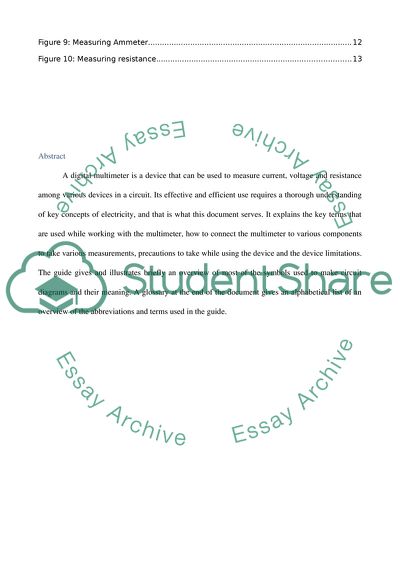Cite this document
(How to Use a Digital Multimeter Coursework Example | Topics and Well Written Essays - 1500 words - 1, n.d.)
How to Use a Digital Multimeter Coursework Example | Topics and Well Written Essays - 1500 words - 1. https://studentshare.org/engineering-and-construction/1793870-a-user-guide-how-to-use-the-digital-multimeter
How to Use a Digital Multimeter Coursework Example | Topics and Well Written Essays - 1500 words - 1. https://studentshare.org/engineering-and-construction/1793870-a-user-guide-how-to-use-the-digital-multimeter
(How to Use a Digital Multimeter Coursework Example | Topics and Well Written Essays - 1500 Words - 1)
How to Use a Digital Multimeter Coursework Example | Topics and Well Written Essays - 1500 Words - 1. https://studentshare.org/engineering-and-construction/1793870-a-user-guide-how-to-use-the-digital-multimeter.
How to Use a Digital Multimeter Coursework Example | Topics and Well Written Essays - 1500 Words - 1. https://studentshare.org/engineering-and-construction/1793870-a-user-guide-how-to-use-the-digital-multimeter.
“How to Use a Digital Multimeter Coursework Example | Topics and Well Written Essays - 1500 Words - 1”. https://studentshare.org/engineering-and-construction/1793870-a-user-guide-how-to-use-the-digital-multimeter.


